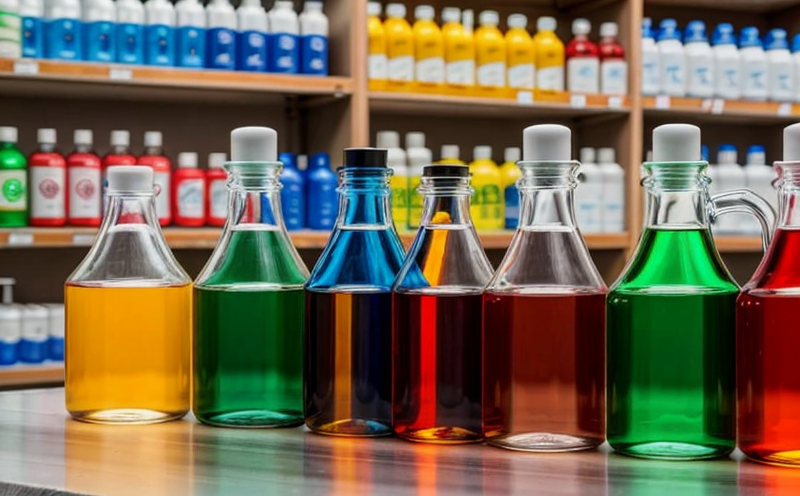UNI EN 14362 Detection of aromatic amines in dyed fabrics
The UNI EN 14362 standard is pivotal in the textile industry, particularly for ensuring compliance with regulatory requirements related to the presence of aromatic amines. Aromatic amines are chemical compounds that can be found in some textile dyes and finishing agents. Their detection is crucial because certain aromatic amines have been classified as carcinogenic or mutagenic by various health and safety organizations, including the International Agency for Research on Cancer (IARC).
The standard provides comprehensive guidance on how to identify these compounds in dyed fabrics through a series of analytical techniques. It covers everything from sample preparation to the final reporting process. This ensures that manufacturers can produce textiles that are safe for consumers and meet stringent regulatory standards.
One of the key aspects of this test is understanding what constitutes an aromatic amine. These compounds are typically derived from benzene rings, which are common in many synthetic dyes used in textile production. The presence of these amines can lead to health risks if they migrate into the environment or come into contact with skin during use.
The UNI EN 14362 standard specifies several analytical methods that laboratories can employ for detecting aromatic amines, including liquid chromatography coupled with mass spectrometry (LC-MS/MS) and high-performance liquid chromatography (HPLC). These methods are chosen because they offer high sensitivity and selectivity necessary to detect even trace amounts of these compounds.
Sample preparation is an important step in this process. Dyed fabrics must be carefully cut into small, representative pieces before analysis. This ensures that the samples accurately reflect the overall composition of the fabric being tested. After cutting, the samples undergo extraction procedures designed to release any aromatic amines present within them.
Once extracted, the samples are analyzed using one of the specified methods outlined in UNI EN 14362. The results provide detailed information about which specific aromatic amines are present and their concentrations. This data is then used by textile manufacturers to make informed decisions regarding the sourcing of raw materials and dyeing processes.
The importance of this testing cannot be overstated, especially given current regulations such as REACH (Registration, Evaluation, Authorisation and Restriction of Chemicals). Compliance with these standards not only protects public health but also enhances brand reputation by demonstrating a commitment to sustainability and safety.
Our laboratory uses cutting-edge technology and experienced personnel to ensure accurate and reliable results. Our team follows the procedures laid out in UNI EN 14362 meticulously, ensuring that every test adheres strictly to international standards.
Applied Standards
The UNI EN 14362 standard is closely aligned with other international standards such as ISO and ASTM. By adhering to these guidelines, our laboratory ensures consistent and accurate results across different markets. The standard outlines specific protocols for sample preparation, extraction methods, and analytical techniques that are used in detecting aromatic amines.
Key aspects of the applied standards include:
- Sample Preparation: Detailed instructions on how to cut fabrics into small pieces for analysis.
- Extraction Methods: Procedures for releasing aromatic amines from the fabric matrix.
- Analytical Techniques: Use of advanced instruments like LC-MS/MS and HPLC for precise measurement.
The standard also specifies acceptance criteria, which serve as benchmarks against which the results are compared. Any detection above these thresholds indicates a non-compliance issue that needs addressing.
By following these rigorous standards, we can provide clients with confidence in our testing capabilities and ensure they meet all relevant regulatory requirements.
Environmental and Sustainability Contributions
The detection of aromatic amines is crucial for the textile industry’s sustainability efforts. By identifying and eliminating harmful chemicals from the production process, manufacturers can significantly reduce their environmental impact. This aligns with broader sustainability goals aimed at reducing waste and promoting cleaner manufacturing practices.
Our laboratory plays an essential role in this by providing accurate and reliable test results that help clients comply with regulatory requirements. Compliance not only protects public health but also fosters trust among consumers who value eco-friendly products. Through our services, we contribute to creating a more sustainable future by ensuring that textiles are produced responsibly.
The use of advanced analytical techniques allows us to detect even the smallest traces of harmful chemicals, enabling early identification and correction of issues within the supply chain. This proactive approach helps prevent potential harm to both people and the environment, making it easier for brands to meet their sustainability targets.
In addition to supporting sustainable practices, our laboratory also contributes to broader environmental initiatives by working closely with textile manufacturers to develop safer alternatives to problematic chemicals. By sharing knowledge and best practices, we help drive innovation in the industry towards greener solutions.
Competitive Advantage and Market Impact
The ability to accurately detect aromatic amines provides significant competitive advantages for companies operating within the textile sector. In today’s market, where consumer awareness about product safety is increasing, having reliable testing services can set brands apart from their competitors.
By ensuring compliance with regulatory standards such as REACH and other international regulations, our laboratory helps clients avoid costly penalties associated with non-compliance. This not only protects the company but also enhances its reputation among consumers who prioritize health and safety in their purchasing decisions.
The demand for safer textiles is growing rapidly, driven by changing consumer behavior and heightened concerns about environmental sustainability. Companies that invest in robust testing infrastructure and expertise are better positioned to meet these evolving demands. Our laboratory offers a comprehensive range of services tailored specifically to the needs of this industry segment, providing clients with peace of mind knowing they are operating within legal frameworks and contributing positively to societal well-being.
Moreover, our commitment to innovation ensures that we remain at the forefront of technological advancements in textile testing. This allows us to offer services using state-of-the-art equipment and methodologies, giving our clients a competitive edge in an increasingly demanding market environment.





